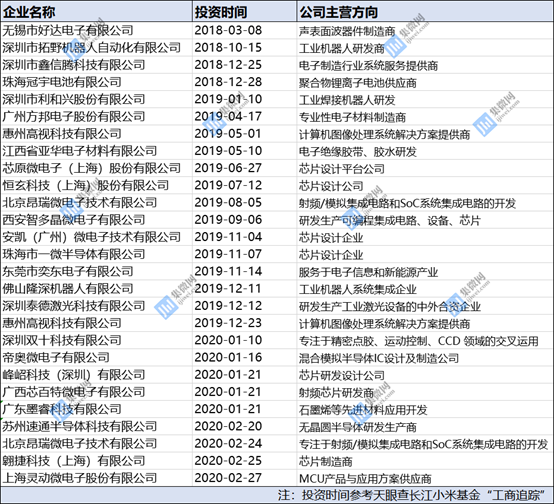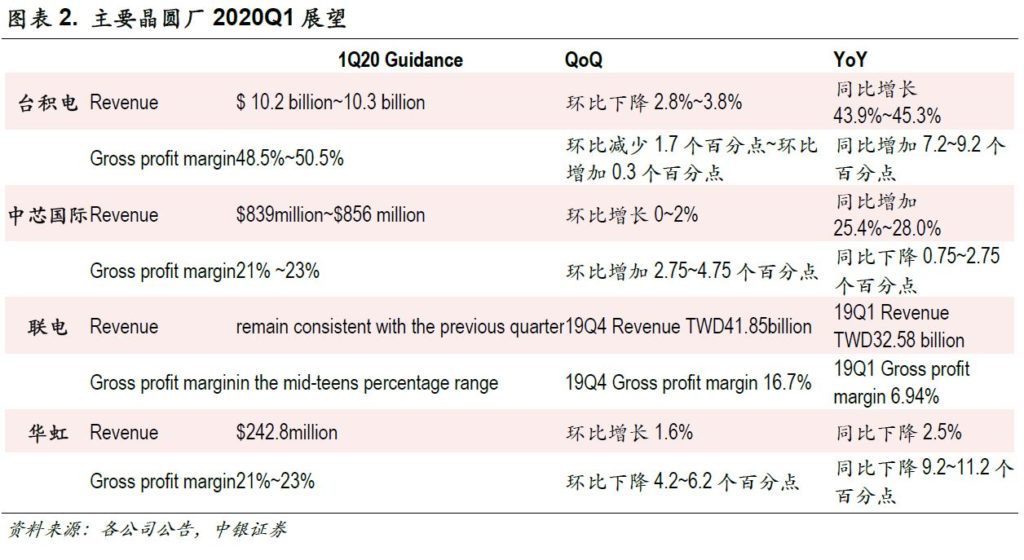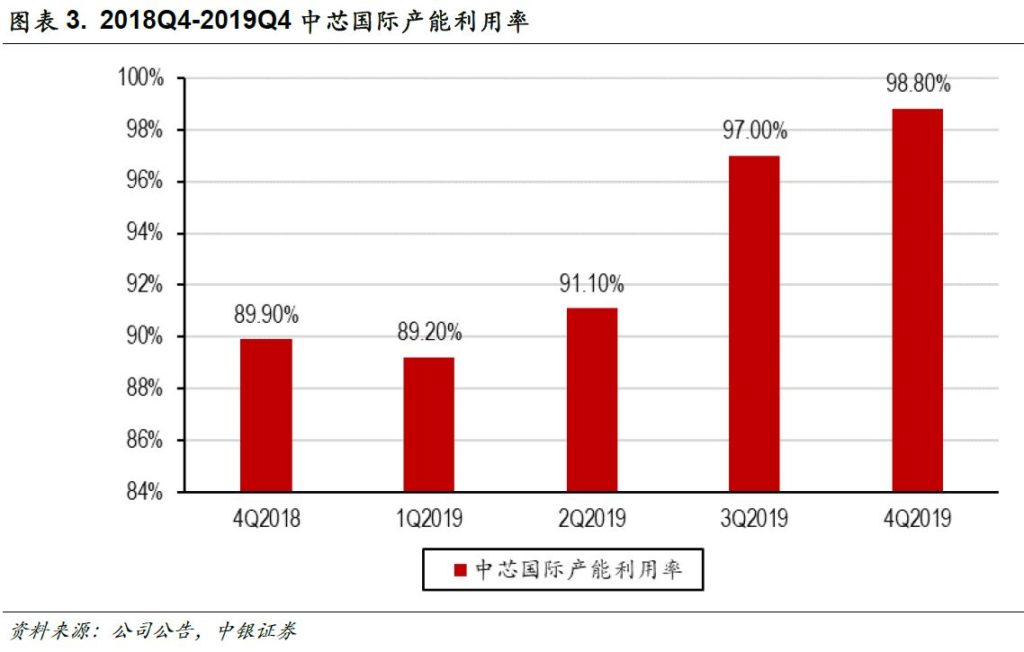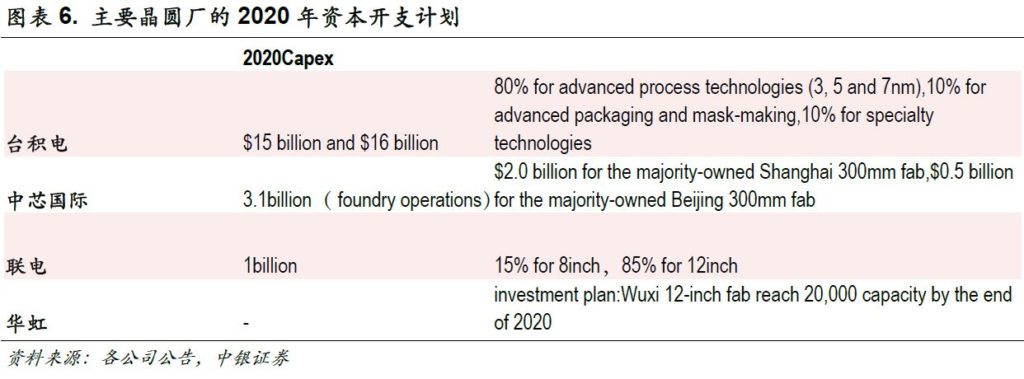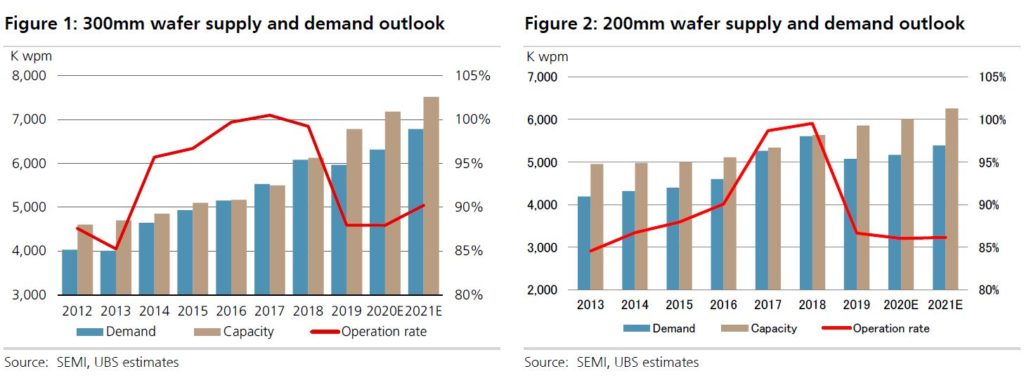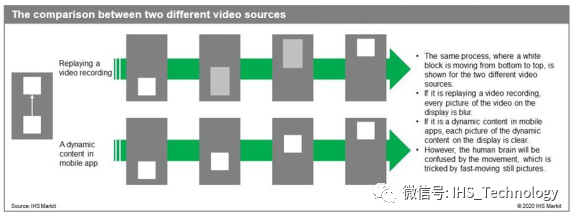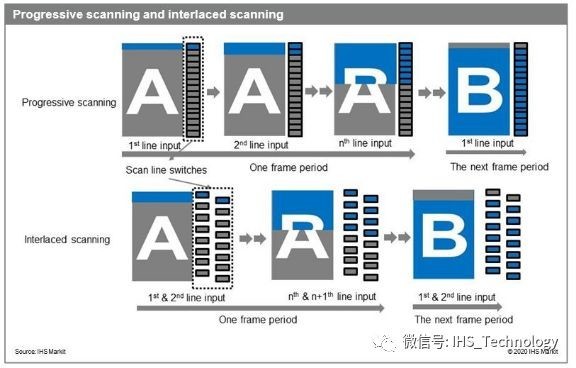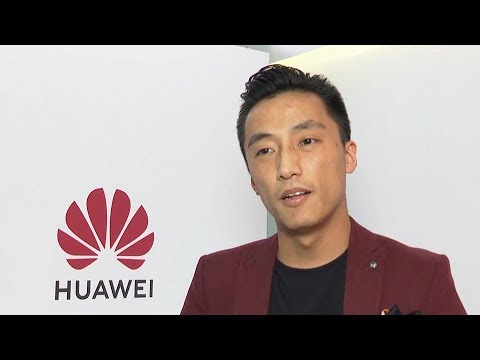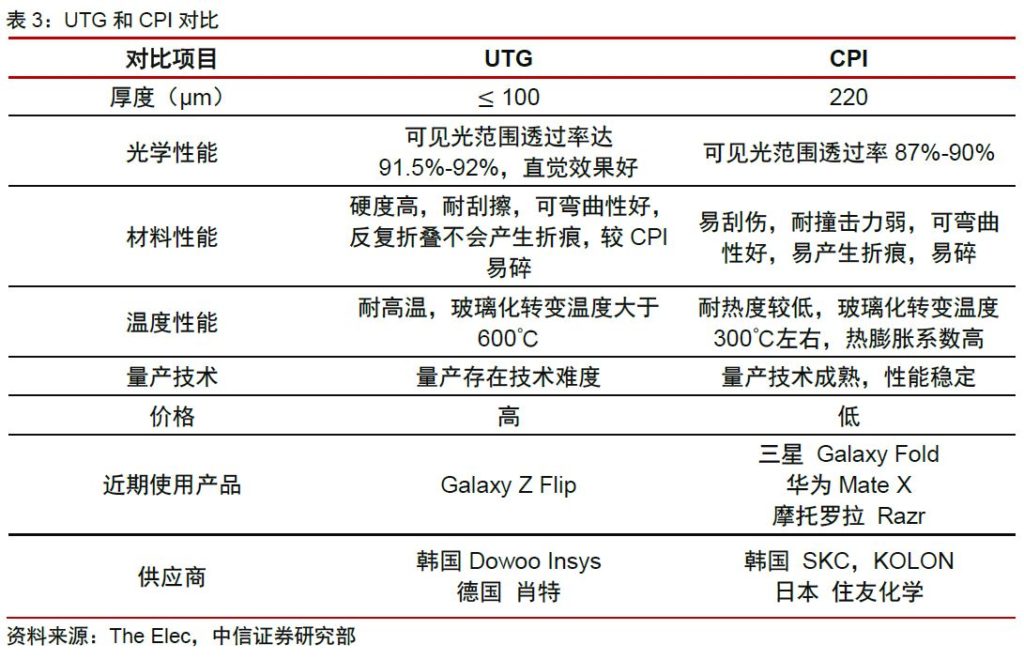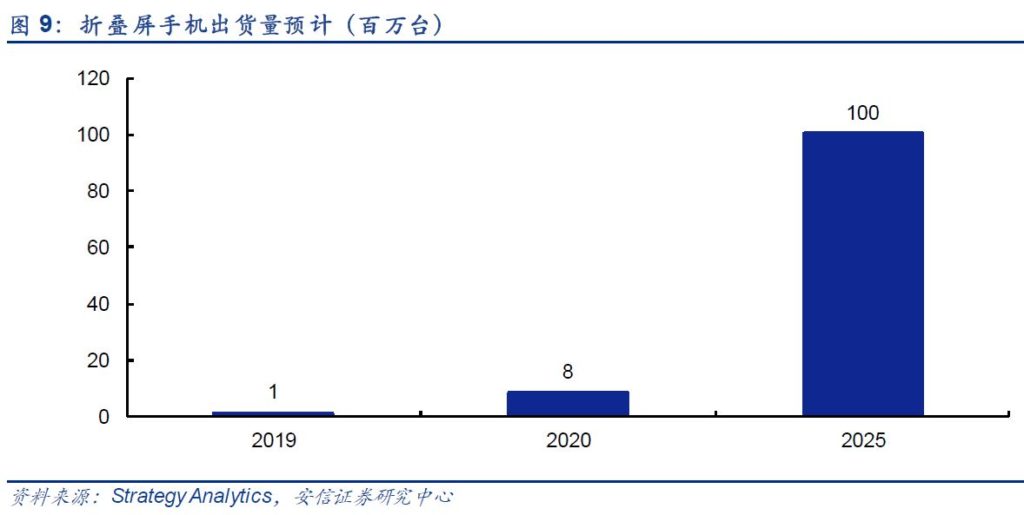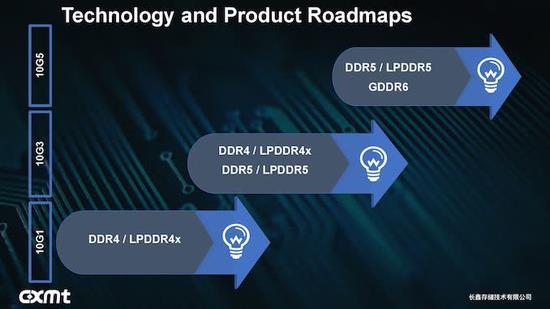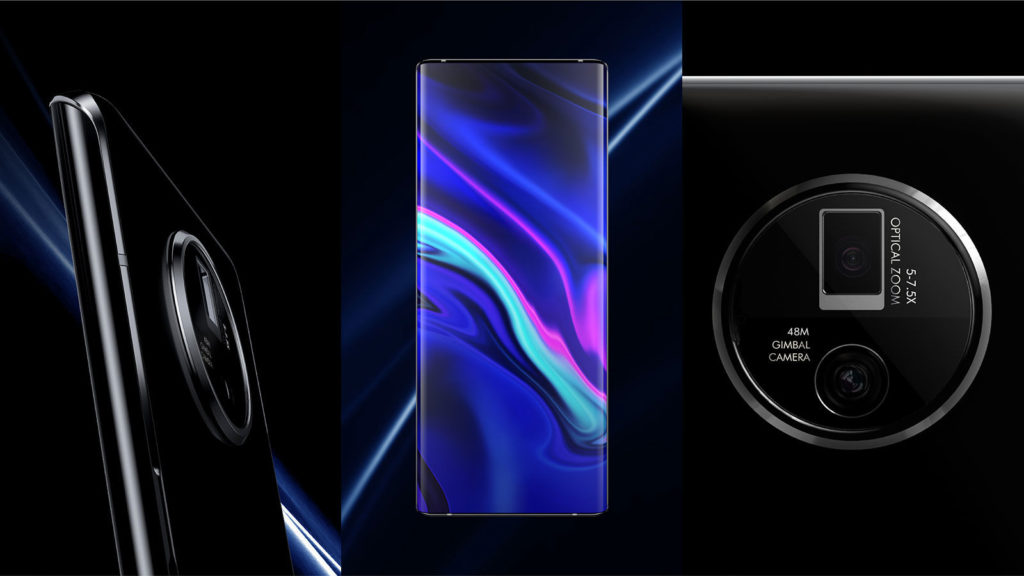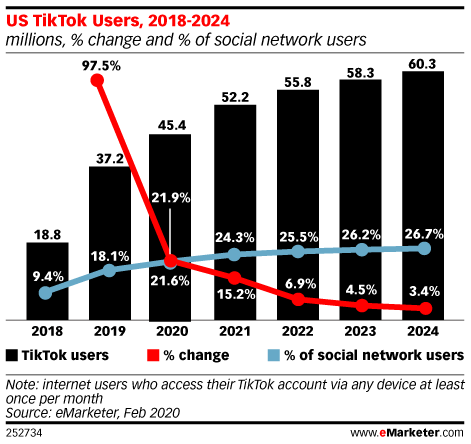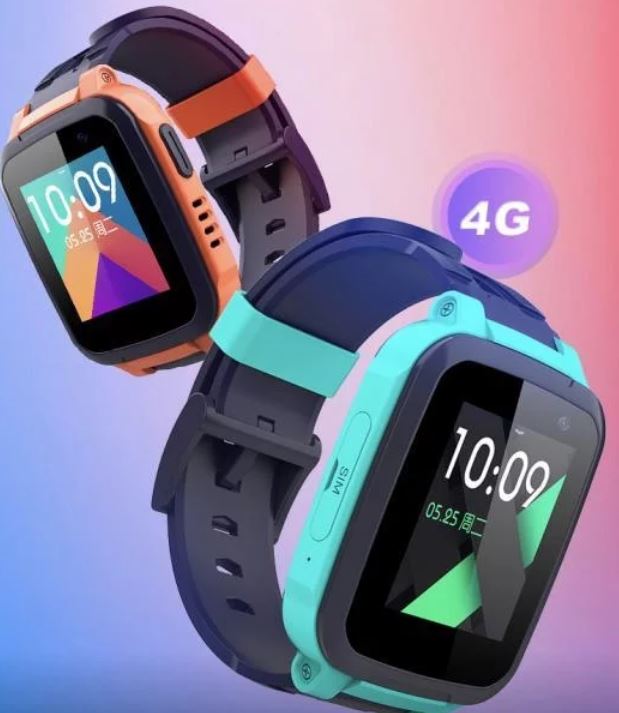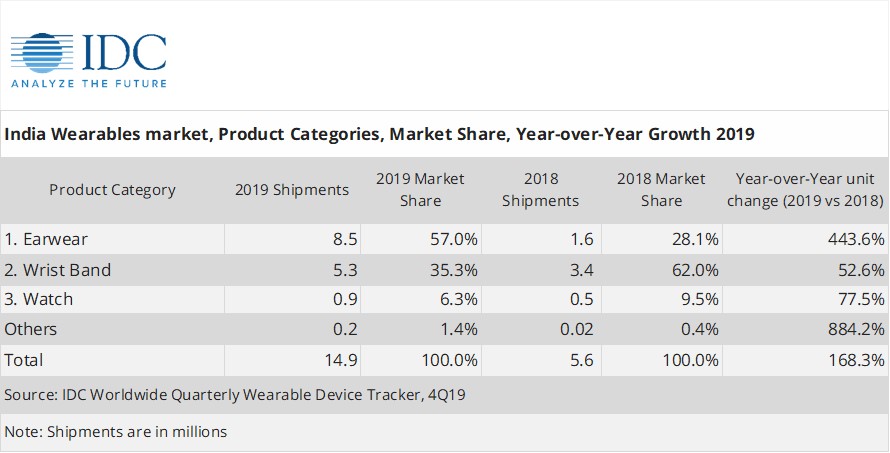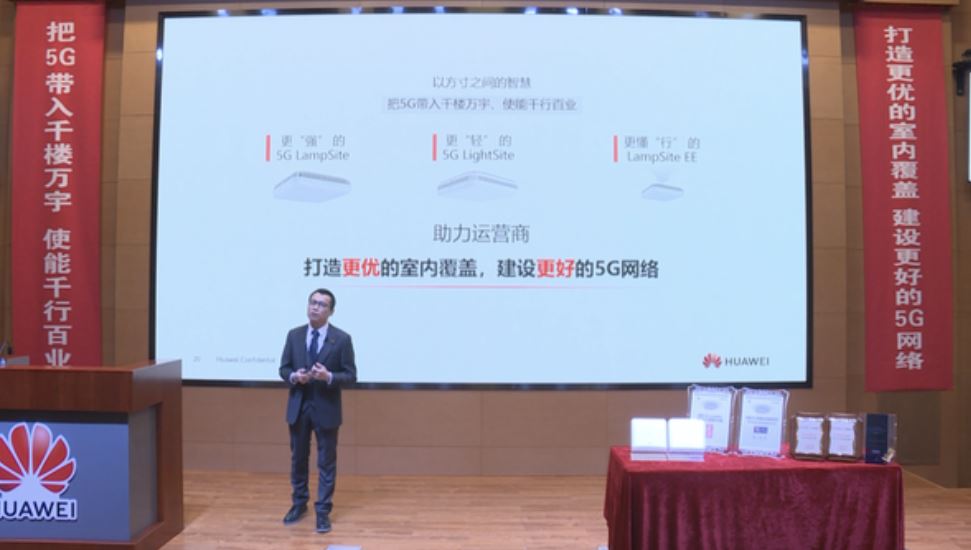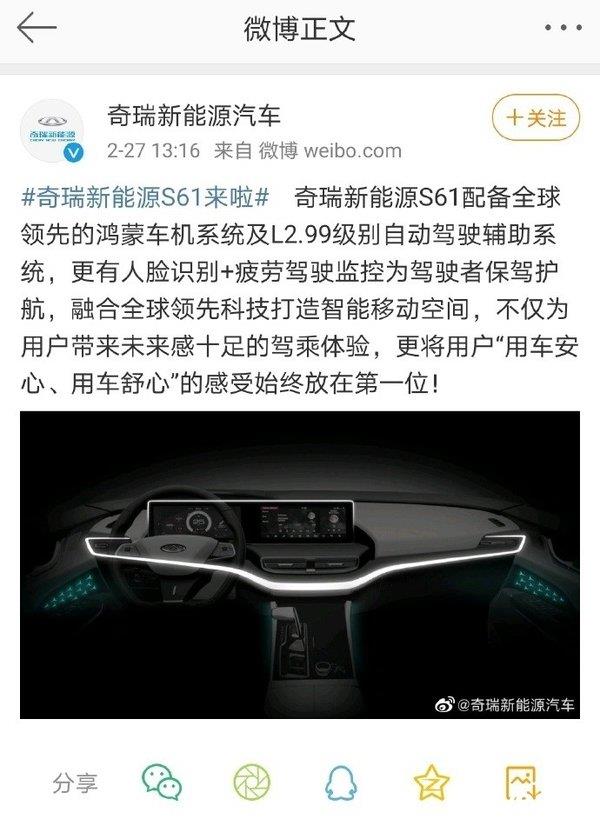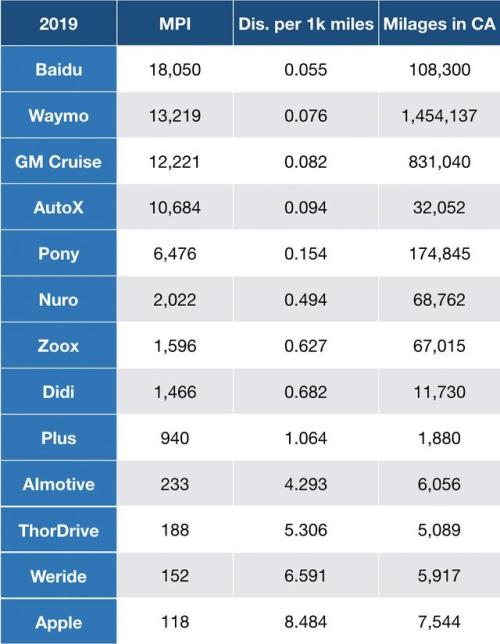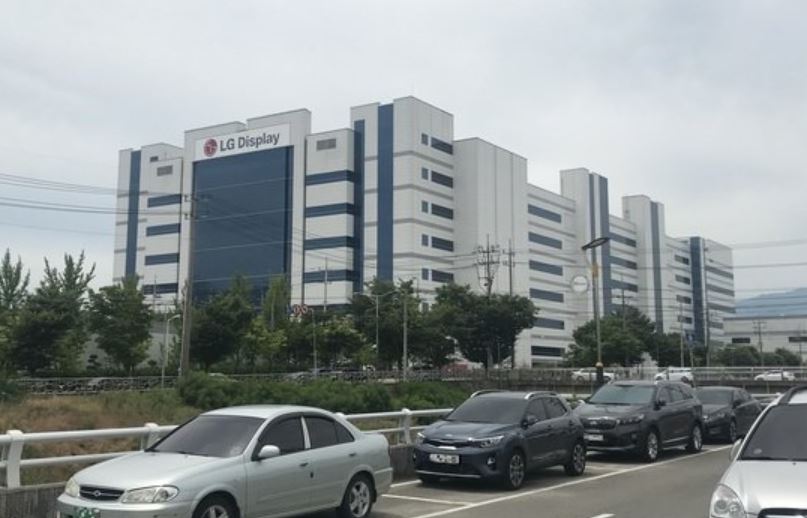
3-1: Xiaomi has invested in more than 20 companies, including chipsets companies; . LG has closed a display module factory located in Gumi for 3 days; etc.
Chipsets
In Feb 2017, Xiaomi released its own processor chip “Surge” and it powers Xiaomi 5C. Also in 2017, Xiaomi and the Yangtze River Industry Fund jointly established the Hubei Xiaomi Yangtze River Industry Fund Partnership with a target size of CNY12B. The latest data shows that Xiaomi Yangtze River Industrial Fund has invested in more than 20 companies, including chipsets companies. (Laoyaoba)
According to IC Insights, annual semiconductor unit shipments, including integrated circuits and optoelectronics, sensors, and discrete (O-S-D) devices are forecast to rise 7% in 2020 reaching 1,036.3B units. In 2018 the semiconductor shipments reached 1,046.0B units—a record high that is expected to remain in place through at least in 2020. (Laoyaoba, IC Insights, press)
According to BOC International, the capacity utilization of wafer fabs in 1H19 is generally at a low level, and in 2H19 it has increased significantly. In 1Q20, the overall capacity utilization is expected to remain high. SMIC’s 4Q19 capacity utilization rate reached 99% and is still fully loaded. TSMC expects that capacity utilization in 1Q20 will still improve compared to 4Q19. UMC expects that capacity utilization in 1Q20 will remain at 90%. Huahong Semiconductor’s 4Q19 capacity utilization rate has declined due to the new plant in Wuxi put into operation in 4Q19. (BOC International report)
TSMC’s capex plan for 2020 is USD15-16B, of which 80% is used for 3nm, 5nm and 7nm advanced processes, 10% is used for advanced packaging and masks, and 10% is used for special processes. SMIC expects 2020 capex USD3.1B, of which USD2B will be used for advanced processes at the 13” plant in Shanghai and USD500M for the 12” plant in Beijing. UMC’s 2020 capex plan is USD1B, of which 15% will be used for 8” wafers and 85% will be used for 12” wafer fabs. Hua Hong’s investment plan is to increase the 12” capacity of the Wuxi plant from the existing 10K pieces to 20K pieces. (BOC International report)
UBS has updated their supply and demand of wafer outlook. UBS now expects industry-wide 300mm wafer capacity utilization of 88.0% in 2019, 87.9% in 2020, and 90.2% in 2021 (previously 88.3% in 2019, 87.8% in 2020, and 90.3% in 2021). (UBS report)
Touch Display
IHS Markit TMT has stated that high frame rate (HFR) can only improve the display effect of smartphone screens to a limited extent. There are several problems with HFR technology. Higher pixels per inch (PPI) will result in narrower circuit line width and greater resistance. AMOLED displays using HFR will result in greater power consumption and pressure drop. In addition, the right and left border designs may be widened due to the need to include more lines to achieve interlaced scanning. (CN Beta, Tech Post, IHS Markit TMT)
LG is the latest company affected by the COVID-19 outbreak. LG has closed a display module factory located in Gumi, South-Korea, due to a confirmed case of the novel Coronavirus in an employee of a nearby bank. The virus itself does not affect the factory, but LG is closing it for 3 days in order to prioritize the health of its workers. (GizChina, Joongang Ilbo)
Huawei’s UK MD Anson Zhang has indicated that the foldable smartphone is to enhance the user experience. He thinks users want a foldable phone because they want a device with a bigger display yet pocketable. (CN Beta, Trusted Reviews, TechRadar)
According to IHS Markit, the shipment of foldable phones is expected to increase from less than 1.5M units in 2019 to 50M units in 2025, with a market penetration rate of 3.37% and a CAGR of 80%. Demand of foldable phone for OLED display is also expected to increase from 252M units in 2019 to 4.545B in 2025, with a CAGR of 62%. (CITIC Securities report)
The global display cover market for foldable smartphones is increasingly being divided into transparent Colorless Polyimide (CPI) film and Ultra Thin Glass (UTG) due to the pros and cons of each solution. Ultra-thin glass (UTG) can be bent to a radius of several millimeters, and it is not easy to produce bending fatigue. It is scratch resistant, high temperature resistant, and outstanding water and oxygen barrier properties. (CITIC Securities report, The Elec)
CITIC Securities has sorted out the main process changes in the foldable phone industry chain, including foldable AMOLED flexible screens, hinges, covers, polarizers, touch screens, OCA glue, FPC, and batteries. (CITIC Securities report, The Elec)
According to Strategy Analytics, global foldable smartphone shipments will grow from less than 1M units in 2019 to 100M units in 2025, becoming the fastest-growing segment of the high-end smartphone market in the next 10 years. From the perspective of the supply chain, Essence Securities believes that manufacturers of display screens and upstream raw materials, hinges and upstream structural parts, batteries, and heat dissipation materials are expected to enjoy market dividends brought by folding screen mobile phones through customers. (Essence Securities report)
Memory
Hefei-based Changxin Memory Storage (CXMT) has finally begun to be supplied its DDR4 storage. It can already supply DDR4 memory chips, DDR4 modules and LPDDR4X mobile memory with frequencies up to 2666MHz, 2666MHz, and 3733MHz. Currently the memory chips CXMT produces still use the 10G1 process, which is the first generation process at the 10nm level, specifically the 19nm process. (Digitimes, CN Beta)
With the development of the industry, in recent years, a number of outstanding companies of NOR Flash have emerged in China, including GigaDevice and DoSilicon; as well as those have NOR production capacity including SMIC and XMC. The construction of three major domestic memory chip manufacturing bases is still in full swing. (Guosen Securities report)
Connectivity
The roll-outs of 5G-enabled phones in 2020 will benefit the supply chain engaging in antennas, RF modules, camera modules and batteries, according to Digitimes. (Digitimes, press, Digitimes)
Phone
vivo has announced its new concept smartphone with “Super Unibody” in China, APEX 2020. It features 6.45” FullView Edgeless Display with 120º curved edge, Qualcomm Snapdragon 865, 48MP main camera with Gimbal stabilization tech, 16MP under-display selfie camera, 12+256GB, 60W wireless charging. (Android Headlines, CN Beta, Gizmo China)
Supply chain players with operations in China, besides suffering production delays and labor shortages from the coronavirus outbreak, may face possible violations of supply contracts with clients for failing to deliver shipments on time. But clients should be able to understand the situation, according to Digitimes. (Digitimes, press)
According to eMarketer, TikTok’s US user base will grow 21.9% in 2020 to 45.4M people. By 2021, it will surpass 50M (52.2M). This follows 97.5% growth in 2019, as the dynamic, short-form video platform drew in a huge number of users, especially children and teens. Growth will slow to single digits in 2022 as the app becomes heavily saturated among core younger users. (CN Beta, eMarketer)
Wearables
360 has launched a new Children smartwatch dubbed 360 children’s watch SE5 Plus. The watch comes with several innovative and important features that ensure that parents keep track of their kids from anywhere. It comes with support for mobile 4G/2G networks. It uses a powerful AI accurate positioning system which allows parents to know the specific location of their children anytime, anywhere. It is priced at CNY299. (Gizmo China, CN Beta, My Drivers)
realme Band is announced featuring a color screen which will display notifications for calls, messages and alarms. It also comes with sleep tracking and real-time heart-rate monitoring and support nine sports modes. It supports IP68 water resistance. (GSM Arena, realme, GizChina)
The India wearables market completed another record year as the shipments of wearables devices saw an impressive 168.3% year-over-year (YoY) growth in 2019, closing the year with 14.9M units, according to IDC. Xiaomi remains the number one in the fitness band category with a market share of 48% and an annual growth of 54.7% in 2019. (GSM Arena, IDC, Gizmo China)
Home
Huawei has announced an enterprise edition of its 5G indoor coverage system, called LampSite EE. Based on its LampSite 5G indoor radio access solution, the industrial edition targets sectors such as smart manufacturing, hospitals, transportation and warehouses. (CN Beta, Huawei, Telecom Paper)
Automotive
Chery New Energy Automobiles has promoted the Chery New Energy S61, which features Huawei’s HongMeng vehicle engine system and L2.99 level automatic driving assistance system, as well as face recognition + fatigue driving monitoring, etc. to escort the driver. (GizChina, My Drivers)
Grab has revealed Mitsubishi UFJ Financial Group (MUFG) and IT services firm TIS have agreed to invest a combined USD856M in the ride-hailing firm, as it seeks to expand aggressively into financial services. (TechCrunch, Reuters)
According to numbers submitted by Apple to California’s Department of Motor Vehicles, 23 of the company’s 69 registered self-driving testbeds were active Dec 2018 – Nov 2019. Collectively, the fleet of modified Lexus RX450h SUVs logged 7,544 miles during the reporting period, down from 79,754 miles in 2018. (Apple Insider, DMC, 36Kr)
